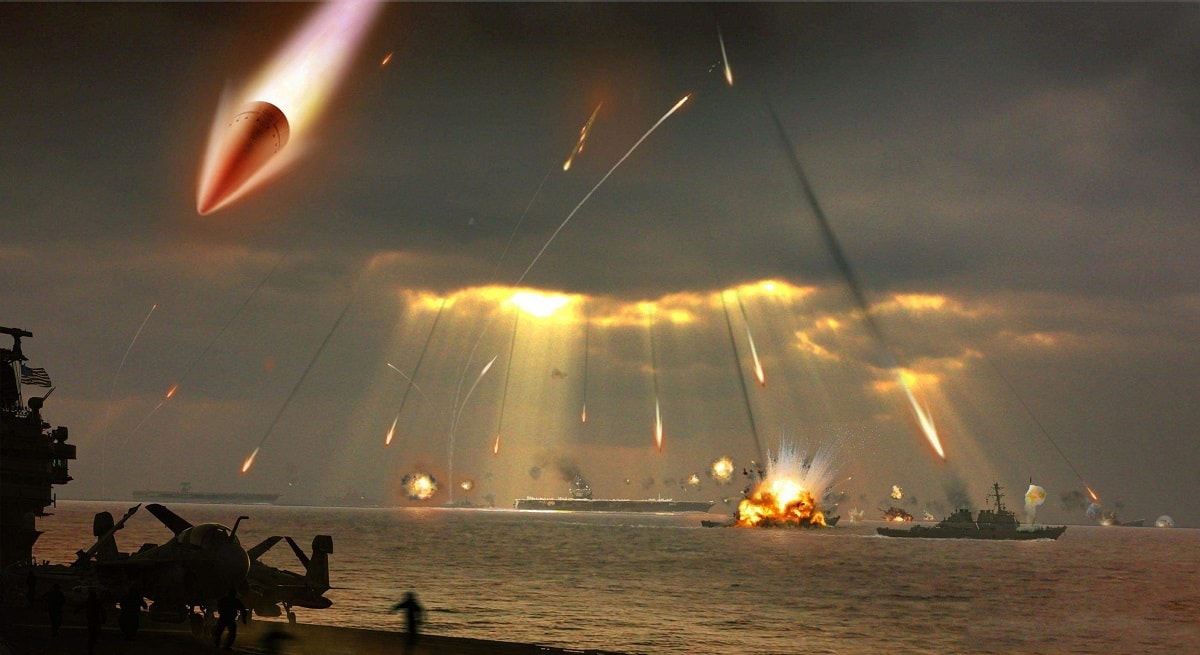The People’s Republic of China has greatly increased its military capabilities. The People’s Liberation Army Navy (PLAN) is now the largest naval force in the world, while the People’s Liberation Army (PLA) also maintains the world’s largest ballistic missile force. Whereas the PLAN is still undergoing a modernization process, and the U.S. Navy maintains a far larger fleet of aircraft carriers, the danger is that in addition to the numbers of missiles, those in China’s arsenal are also far more accurate and have ranges that could put the crosshairs on American interests in the Indo-Pacific region.
According to a newly released report from the U.S. Department of the Army, titled “Chinese Tactics,” the accuracy and range of Beijing’s ballistic missile force have been greatly expanded.
This includes the DF-11, which remains the People’s Liberation Army Rocket Force’s (PLARF’s) most widely employed short-range ballistic missile (SRBM). The road-mobile SRBM began development in 1984 as the M-11. When it entered service with the PLA Second Artillery Corps in 1992, the DF-11 was originally designed to provide operational-level area fires out to 300 kms to theater commanders. However, the Army report warned that subsequent versions have expanded the range out past 700 kms.
“Accuracy has also increased, reducing circular error probable to only 30 meters, giving theater commanders a long-range precision strike capability. The DF-11 can employ both conventional and nuclear warheads; conventional warheads may be either HE submunition or fuel-air explosive,” the report added.
The PLARF may be now able to launch structured attacks with its DF-11 fleet, while the solid-fuel rocket and mobile transporter-erector-launchers enable rapid launch and reload operations.
Newer Platforms, Greater Dangers
Beyond the DF-11, the PLARF’s arsenal now includes the DF-15/16, a newer family of systems that were developed to provide the bulk of the operational-level fire support capability. These systems range between 600 kms and 1,000 kms, and they employ advanced antiballistic missile countermeasures such as terminal maneuvers and decoys, the Army report noted.
“Early variants were not accurate enough for precision strikes, but modernized variants enjoy a circular error probable of 30 meters or less. These missiles can employ nuclear or conventional warheads, and have a significantly larger payload (over 600 kilograms) than do most SRBMs,” the report added.
China also has its B-611, an SRBM system that was developed in the early 2000s to replicate the capabilities of the Soviet SS-26 Iskander. It was first displayed at China’s International Aviation and Space Exhibition in 2004, said to have a range of 150 kilometers. More recent versions of the B-611 have been reported increasing its range to 500-km. The missile is carried and launched in an 8×8 cross country truck. Some trucks are designed to carry two missiles.
Its capabilities also include advanced penetration aids, good mobility, rapid reload, and precision targeting. The B-611 is likely intended to complement the 300-mm rocket class with an enhanced penetration weapon, enabling the targeting and destruction of antiballistic missile systems prior to more general targeting, the Army noted.
While none of these missiles would be able to reach the continental United States, these missiles could certainly strike targets in Taiwan as well as China’s other potential rivals in the region.
Peter Suciu is a Michigan-based writer who has contributed to more than four dozen magazines, newspapers and websites. He regularly writes about military small arms, and is the author of several books on military headgear including A Gallery of Military Headdress, which is available on Amazon.com.

